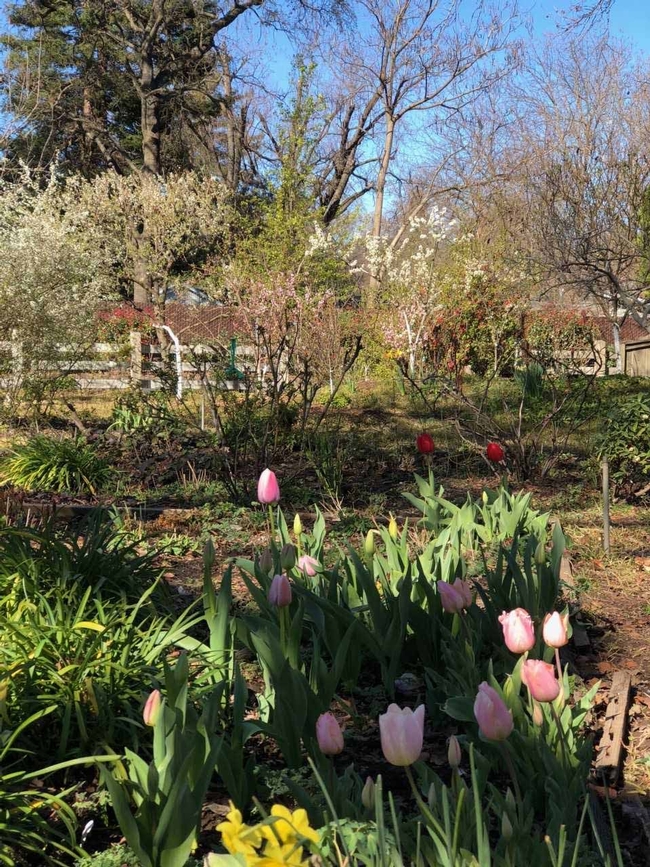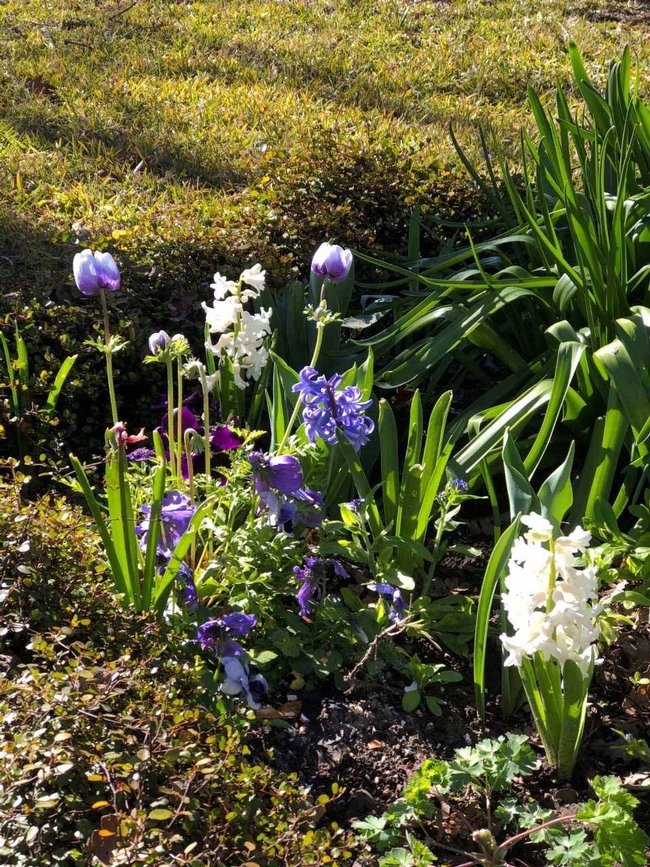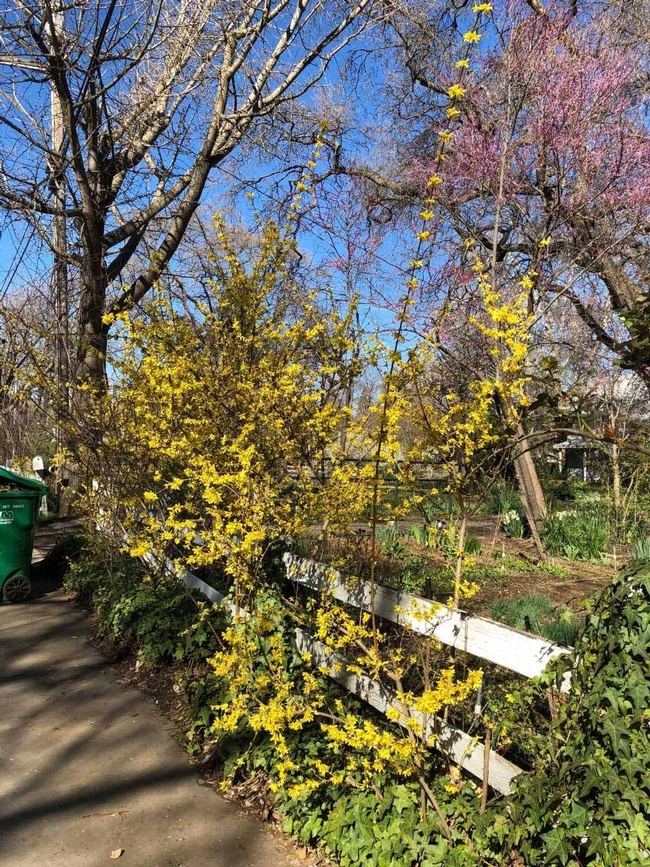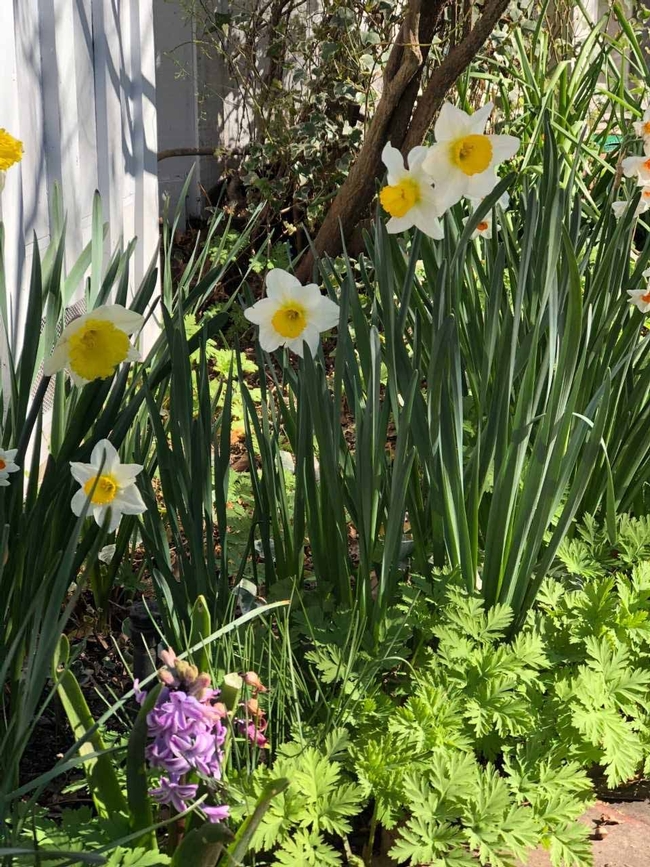By Laura Lukes, UC Master Gardener of Butte County, March 16, 2018.

Forty years ago, Brown and her husband Jeff moved to the home on that property, and she began to work her magic on an enormous expanse of St. Augustine grass shaded by native oaks and sycamores. Over time, she's transformed it into a patchwork of plants that provide flowers and greenery for bouquets and floral displays throughout all four seasons of the year.
On a brisk afternoon in late February, Brown led a tour of her Cutting Garden as a part of the UC Butte County Master Gardeners 2018 Spring Workshop Series. The garden was bursting with color and texture from stands of daffodils, narcissus, hyacinth,and anemone. Forsythia and “Shoebutton” spirea were in bloom, as were redbud trees and giant camellias. Trees in the family fruit orchard were showing off their blossoms.
Workshop participants were given a valuable list Brown had prepared titled “Cut Flowers for Most of the Year,” annotated with useful commentary and helpful hints.
Brown began the tour with a short history of her interest in flowers, which started when she was a child, planting nasturtium and sweet pea seeds with her mother. When Brown and her husband moved to the rich earth of their Chico home after gardening in decomposed granite in the Hollywood Hills, Brown set out to “learn flowering plants,” most of which did not grow in Southern California. In those days many interesting shrubs and perennials were found only in catalogs and purchasing them meant paying steep shipping fees.

Creating floral arrangements for weddings meant pre-dawn buying trips to the San Francisco Wholesale Flower Mart. Acquiring a resale number and Market Badge gave Brown behind-the-scenes access which made all that driving worthwhile.
Despite the dazzling variety of Flower Market offerings, Brown really prefers fresh and seasonal, just like what is on tap at our Farmers Markets. For example, roses are entirely unnatural at Valentine's Day, and they represent a large carbon footprint in the energy required to grow them in greenhouses and fly them from South America. Greenhouse flowers come with a high use of chemicals, like fungicides, to keep them perfect in those humid growing conditions. But tulips and anemones, beautiful flowers which bloom naturally in February, come in Valentine's Day colors of red, white, and pink too.
Brown scheduled this workshop in February precisely because many people think it is an unlikely month for finding local flowers suitable for use in arrangements. She emphasizes that the category of cut flowers includes bulbs and branches of flowering trees and shrubs as well as annuals and perennials.

Before Valentine's Day there is a very early spirea in bloom, along with branches of wild plum with its fabulously delicate white blossoms. Branches of this plum, together with those of the purple-leafed plum with pink flowers, make a wonderful arrangement in a vase on their own. Another benefit of using spring branches, even before they flower, is that they add height and contrast to a bouquet.
Earliest spring also marks the onset of flowering bulbs. As Brown notes, “Bulbs are sort of a secret bonus garden. They bloom while the perennials, biennials, and roses are dormant and the earliest annuals are just getting ready. They can slide into spaces between things that will be mostly covered up when the other plants wake up and grow.” Some of Brown's favorite early-blooming bulbs are daffodils, narcissi, anemones, hyacinth, and leucojum (often called snowdrops). Freesias and allium, along with ranunculus (one of the very best cut flowers), will strut their stuff in March. Like the many types of daffodils blooming from very early spring to late spring, some tulips can start in February while others bloom late in April.
Though the very best cutting flowers will last about a week in an arrangement, many other flowers will look fine for a special occasion or over a weekend.

After the tour of her garden, Brown used cuttings she had prepared earlier to fashion sample arrangements, and invited us to make our own. Brown sums up her cut flower efforts with this blessing: May beauty, fragrance, and variety lighten your spirit beyond the life of the blooms. I finished the tour of her Cutting Garden with a lovely posey of my own, determined to sew some felt pads (brilliant idea!) into the knees of my garden jeans.
Note: For more information about the Master Gardener Program and Workshops, please visit http://ucanr.edu/sites/bcmg/.
Questions? Plant problems? Call the Master Gardener Hotline at 530-538-7201 and/or visit our website Hotline page at ucanr.edu/p/49588.


